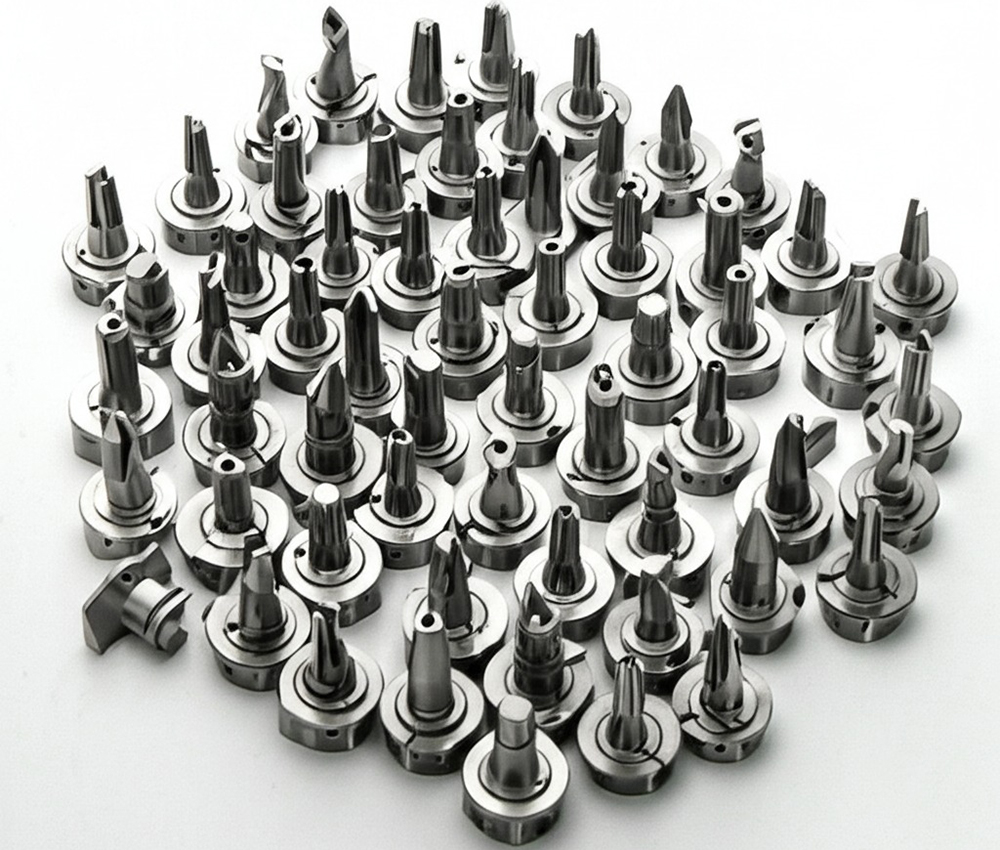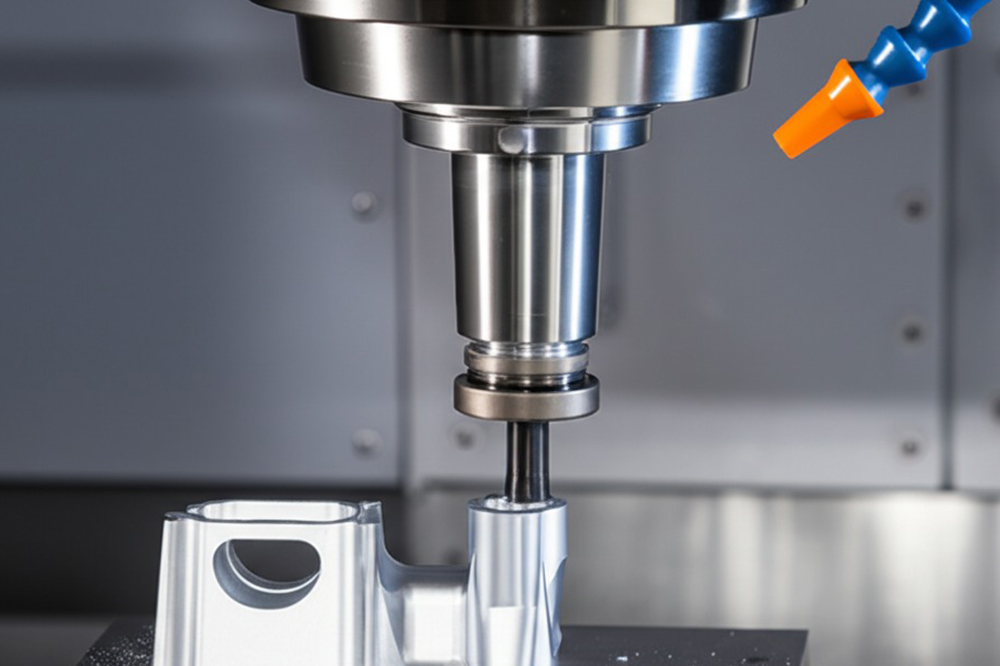Low Volume CNC Machining: Benefits, Applications, and Design Tips
Introduction
In modern manufacturing, producing parts efficiently while maintaining cost-effectiveness is essential. Traditionally, mass production has been the go-to approach for reducing unit costs. However, for prototyping, startups, and custom projects, low volume CNC machining provides an effective alternative.
This article explores the advantages, applications, and best design practices for low volume CNC machining, along with cost-reduction strategies and comparisons with large-scale production.
What is Low Volume CNC Machining?

Low volume CNC machining is a strategic approach used in manufacturing to produce small to medium quantities of parts, typically ranging from 10 to 10,000 pieces. However, this range varies among manufacturers; for some, low volume means 100 to 1,000 parts, while others may consider thousands of parts as low volume.
Unlike mass production, where the goal is to produce parts at the lowest unit cost possible, low volume CNC machining offers more control over production volume, enabling greater flexibility, rapid turnaround times, and minimal upfront investment.
Key Characteristics of Low Volume CNC Machining
-
Precision and Consistency – CNC machining ensures that each part meets strict dimensional accuracy, making it suitable for high-precision industries like aerospace, medical, and automotive.
-
Flexibility in Design Adjustments – Since parts are produced in smaller quantities, design modifications can be made quickly without incurring significant additional costs.
-
Shorter Lead Times – Manufacturers do not need to wait for full-scale production runs to be completed, enabling faster market entry for prototypes and new product iterations.
-
Cost-Effective for Prototyping and Small Batches – Avoids the high initial tooling costs associated with injection molding or die casting.
-
Support for a Variety of Materials – CNC machining can process metals (e.g., aluminum, stainless steel, titanium) and plastics (e.g., PEEK, ABS, Delrin), offering a wide range of material options.
When is Low Volume CNC Machining Ideal?
-
Prototype Development – Before committing to full-scale production, engineers need to test and validate designs.
-
Custom and Specialty Parts – Some industries, such as medical and aerospace, require highly customized, low-volume components.
-
Bridge Production – Used as a transition between prototyping and mass production to meet initial demand.
Advantages of Low Volume CNC Machining
Low volume CNC machining is widely adopted due to its numerous advantages over traditional manufacturing processes.
1. Reduced Costs for Small-Scale Production
While mass production lowers per-unit costs, the setup costs for tooling and equipment in large-scale production can reach thousands of dollars. In contrast, low volume CNC machining requires fewer machines and lower initial investment, making it an economical choice for startups and small businesses.
2. High Precision and Dimensional Accuracy
Each part receives careful attention due to the small production quantity, ensuring they meet tight tolerances. For example, aerospace components often require tolerances as tight as ±0.005mm. CNC machining achieves this by using multi-axis machining centers equipped with high-speed spindles and automatic tool changers.
3. Shorter Time-to-Market
Rapid prototyping is crucial for competitive product development. CNC machining enables manufacturers to quickly iterate designs and bring products to market faster, allowing businesses to test market demand before full-scale production.
4. Flexibility in Manufacturing and Design
Small batch production allows for frequent design modifications. For example, an automotive company testing different intake manifold geometries can fine-tune their designs based on performance data without incurring massive costs.
5. Lower Inventory Risk
With just-in-time (JIT) manufacturing strategies, companies can produce only what is needed, reducing excess inventory costs and minimizing financial risk.
When Do You Need Low Volume CNC Machining?
1. Rapid Prototyping and Product Testing
Prototypes are essential for evaluating the design, functionality, and durability of a product. Industries such as medical device manufacturing often require multiple prototype iterations before regulatory approval.
2. Custom and Specialty Parts
Industries like aerospace and defense often require highly customized, low-volume components with strict specifications. CNC machining enables the production of unique, application-specific parts with precision.
3. Startups and Small Businesses
Entrepreneurs launching a new product may not require mass production initially. Low volume CNC machining allows them to manufacture small batches, assess market demand, and adjust accordingly.
4. Supply Chain Resilience
Low volume manufacturing can help companies respond quickly to supply chain disruptions. When mass production is delayed due to material shortages, CNC machining provides an agile solution.
Cost Reduction Strategies for Low Volume CNC Machining
While CNC machining is a cost-effective solution for small batch production, the following techniques can further optimize expenses:
-
Design for Manufacturability (DFM) – Simplify geometries to reduce machining complexity and minimize setup time.
-
Use Standardized Tooling and Fixtures – Avoid custom tools unless necessary. Standard cutting tools reduce setup costs and enhance efficiency.
-
Choose Cost-Effective Materials – Selecting easy-to-machine materials like aluminum (6061-T6) over harder alloys can significantly reduce processing time and cost.
-
Minimize Secondary Operations – Post-processing steps like polishing and anodizing add cost; eliminating unnecessary ones saves money.
-
Batch Similar Parts Together – If multiple similar components are needed, grouping them into one machining run optimizes time and reduces waste.
Low Volume vs. Mass Production CNC Machining
| Factor | Low Volume CNC Machining | Mass Production CNC Machining |
|---|---|---|
| Production Volume | 10 – 10,000 units | 10,000 – millions |
| Setup Costs | Low | High |
| Lead Time | Shorter | Longer |
| Per Unit Cost | Higher | Lower |
| Customization | Highly flexible | Limited flexibility |
Other Small Batch Manufacturing Processes
In addition to CNC machining, other low-volume manufacturing methods include:
-
Injection Molding – Ideal for plastic parts with high initial tooling costs.
-
3D Printing – Suitable for prototypes and complex geometries.
-
Vacuum Casting – Used for rapid prototyping of plastic components.
Choosing a Low Volume CNC Machining Service Provider
When selecting a provider, consider:
-
Quality Standards – Look for ISO 9001 certifications.
-
Lead Time – Ensure their delivery schedule aligns with your project timeline.
-
Cost Efficiency – Compare quotes to balance quality and price.
-
Technical Capabilities – Ensure they can handle complex geometries and tight tolerances.
Why Choose Huazhi for Low Volume CNC Machining?
Huazhi Technology specializes in high-precision low volume CNC machining, offering:
✅ Tight tolerances as low as ±0.005mm
✅ Fast turnaround times
✅ ISO-certified quality control
✅ Extensive material selection (metals & plastics)
Conclusion:
As technology continues to evolve, low volume CNC machining is expected to become even more efficient with the integration of AI-driven automation, real-time monitoring, and hybrid manufacturing techniques (such as CNC + 3D printing). With growing demand for on-demand production, sustainable manufacturing, and supply chain resilience, CNC machining will play an increasingly important role in modern industrial applications.
If your business requires high-precision, small-batch CNC machining, choosing an experienced manufacturer like Huazhi Technology ensures you receive top-quality parts, fast turnaround times, and competitive pricing.
📞 Contact us today for a free consultation and quote! 🚀
FAQ: Low Volume CNC Machining
1. What is considered low volume CNC machining?
It typically refers to 10–10,000 parts, depending on manufacturer capability.
2. Is low volume CNC machining expensive?
While unit costs may be higher than mass production, setup costs are lower, making it cost-effective for small runs.
3. How long does low volume CNC machining take?
Lead times vary but typically range from a few days to a few weeks, depending on part complexity.
4. Can CNC machining be used for prototyping?
Yes! CNC machining provides high-quality functional prototypes before mass production.
5. Which industries benefit most from low volume CNC machining?
Industries such as aerospace, medical, electronics, and automotive frequently use it for precision components.


